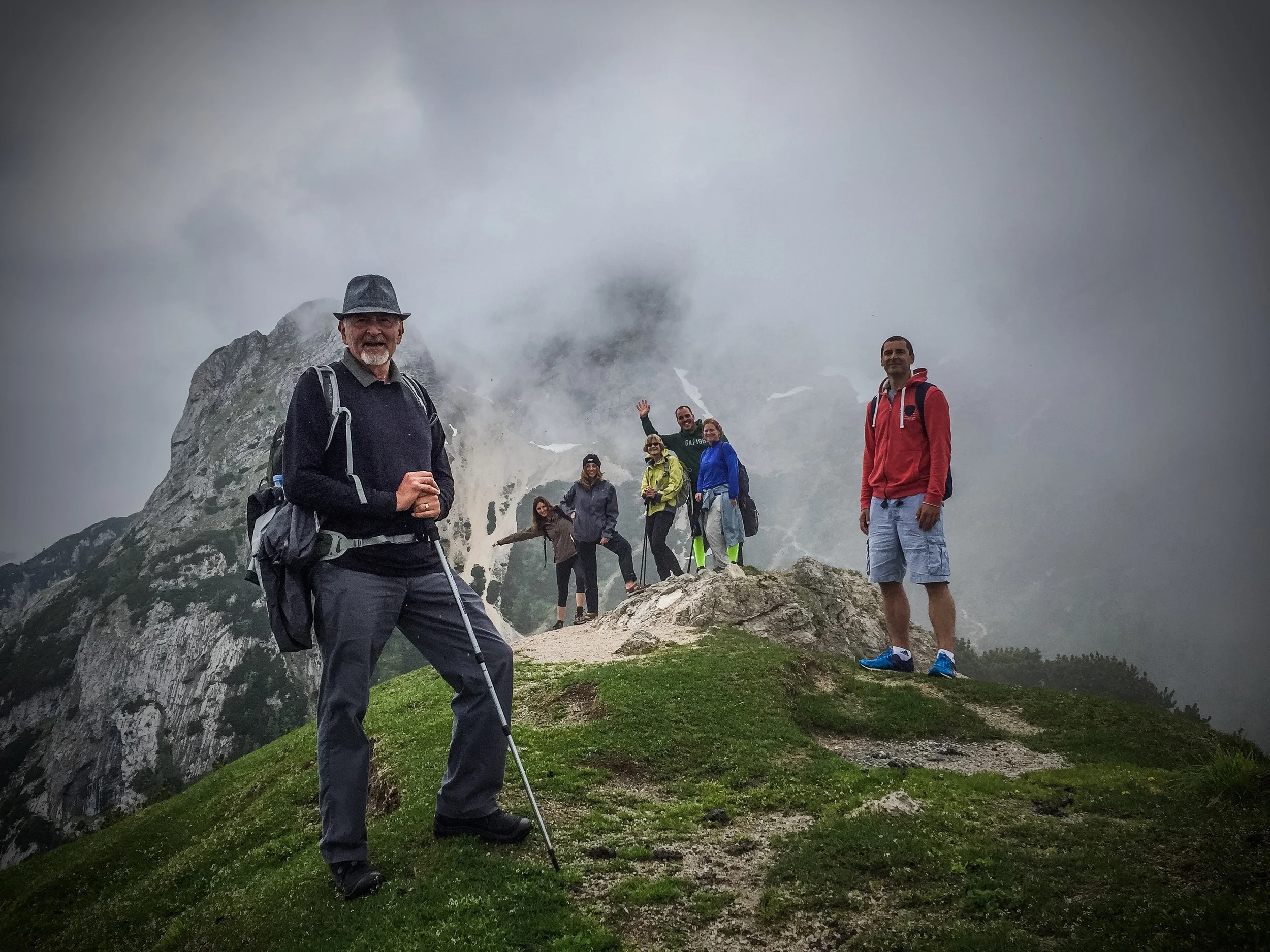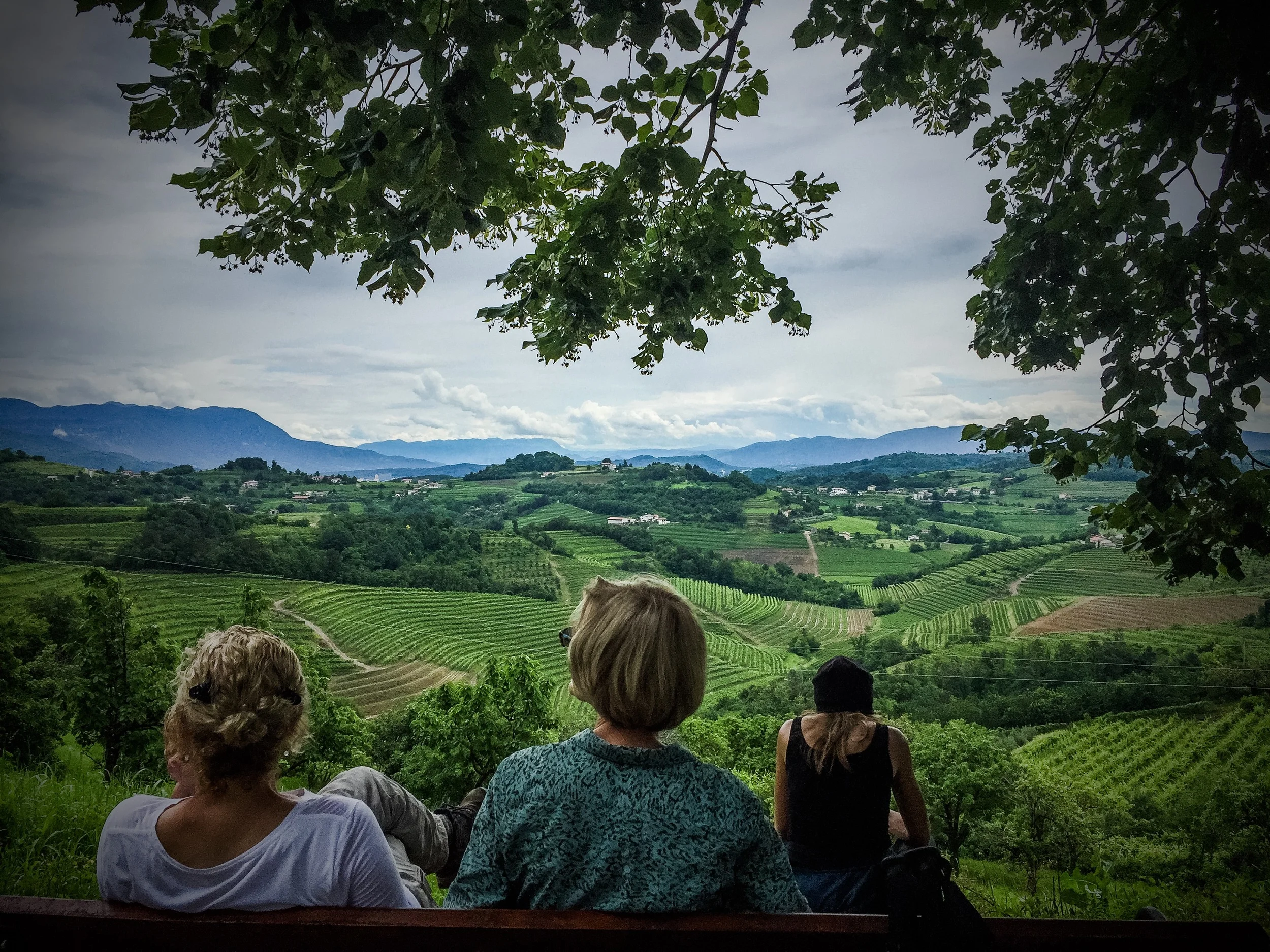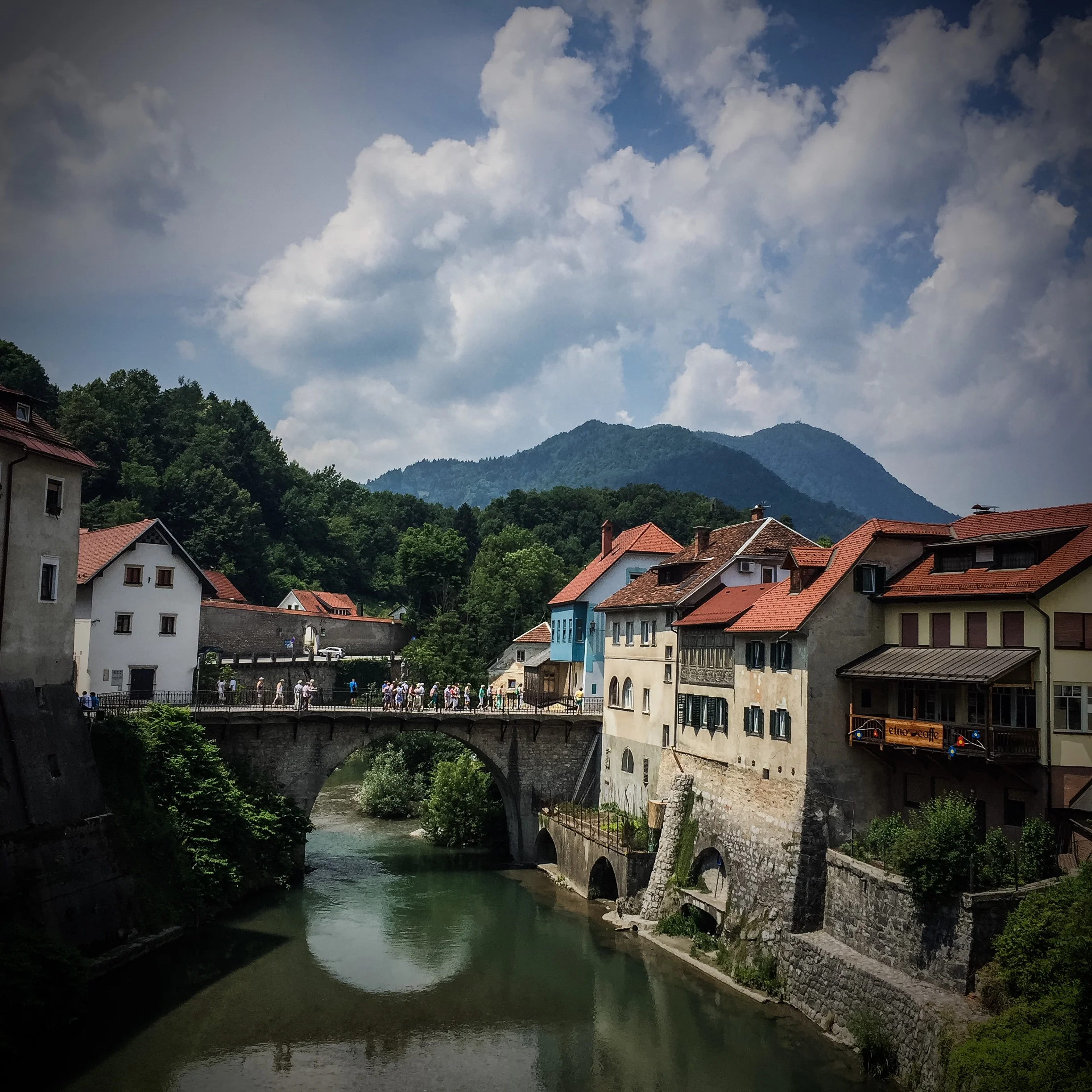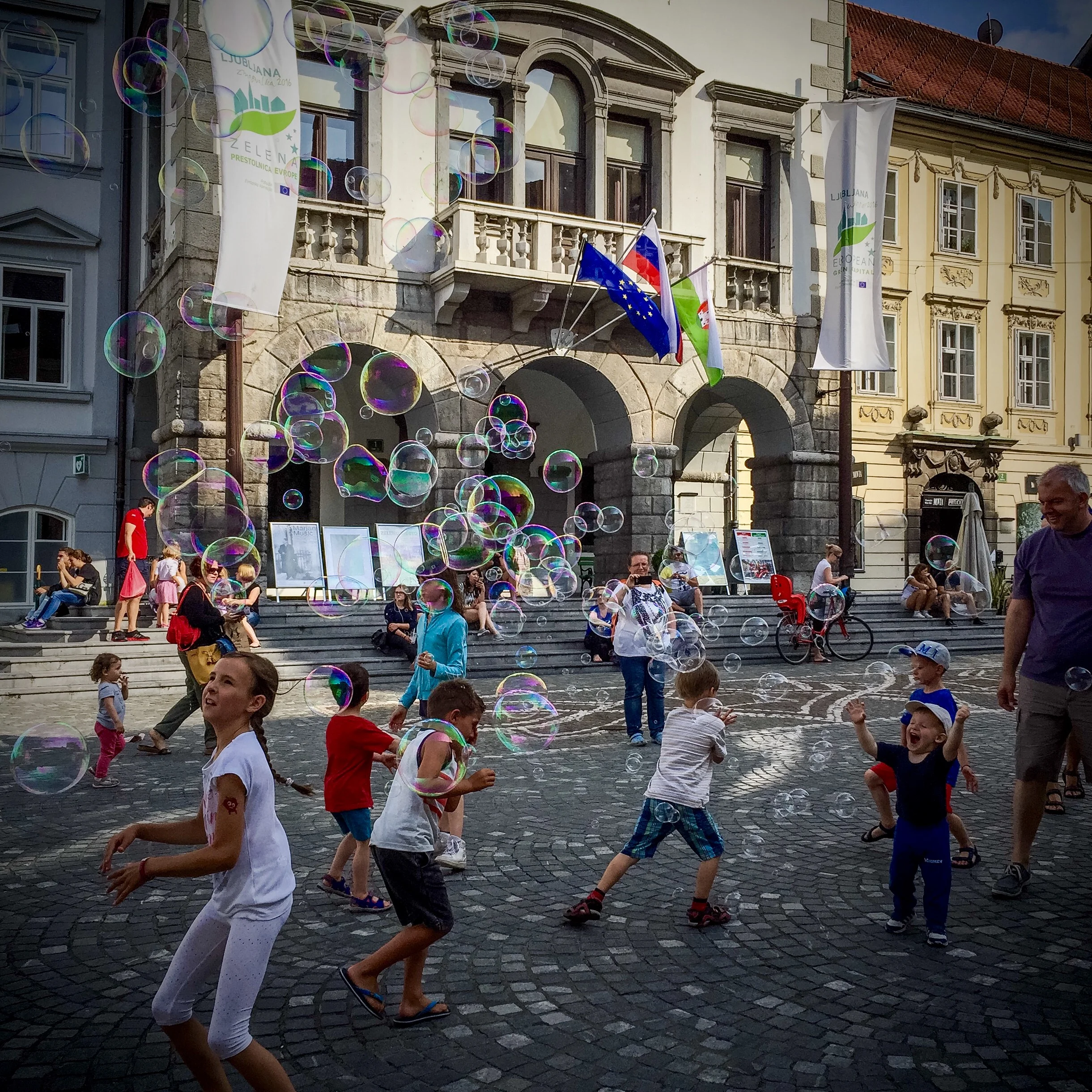Walking my way
You grow up bemoaning your foreignness. The parents and relatives speaking broken English with awful accents. The funny clothes your mother sews for you on her Singer. A brother called Sasha sent to school in short pants on his first day. The derogatory "off the boat" references. The taint of being from the land of the "dirty Soviet Commies." Having to go to Russian school. Being born in Yugoslavia, your mother speaking Serbo-Croatian to you, a place and language no one else has ever heard of. The math professors working as janitors. Christmas showing up on January 7...
And then slowly it becomes "in" to have a heritage. You learn other languages easily. Your husband revels in the stories he hears at tables full of foreign dishes, sitting with old refugees sharing great stories.
Meanwhile, both your homelands disintegrate in radically different ways. Who are you when your country of birth changes every time you renew your passport?
And now you sit at a table in Slovenia, in the ex-Yugoslavia, a few miles from Italy and the refugee camp where you spent your early childhood, basking in a glow that reaches deep into your soul. Hands reach in a toast proposed and echoed by voices known from birth, others gained through your life history, some as recently added to your life as a week ago. But all closer in spirit and full of more warmth than you ever imagined life could contain.
The waiter, embarrassed by his bad English, hears your accent and suddenly he's your friend and you learn he's Serbian, with a Moldavian/Russian wife called Tania. Of course.
Thank you, Zora and Tolya, for a heritage so complex and rich that tears roll as I remember you. A toast to you, my parents who walk with us.
"На здоровье!" "Živjeli!





























